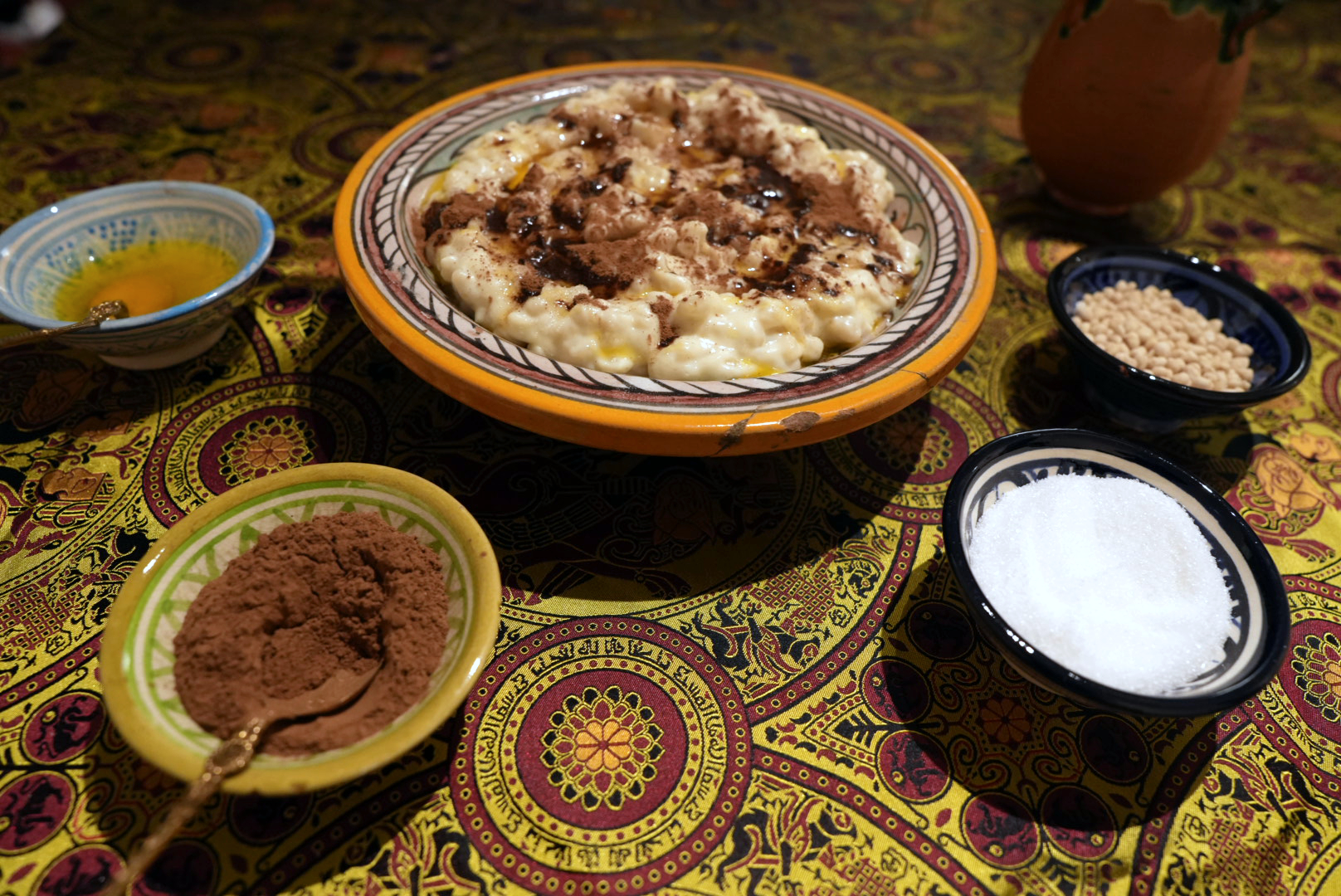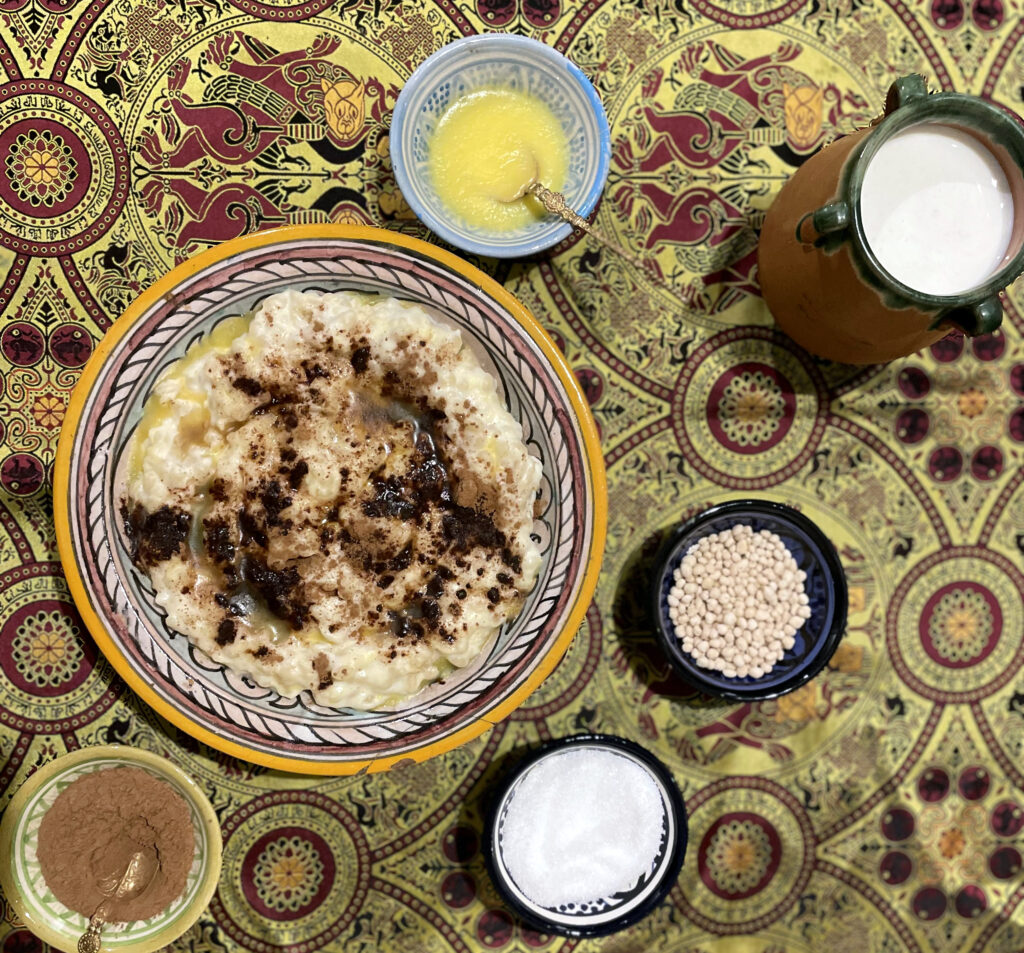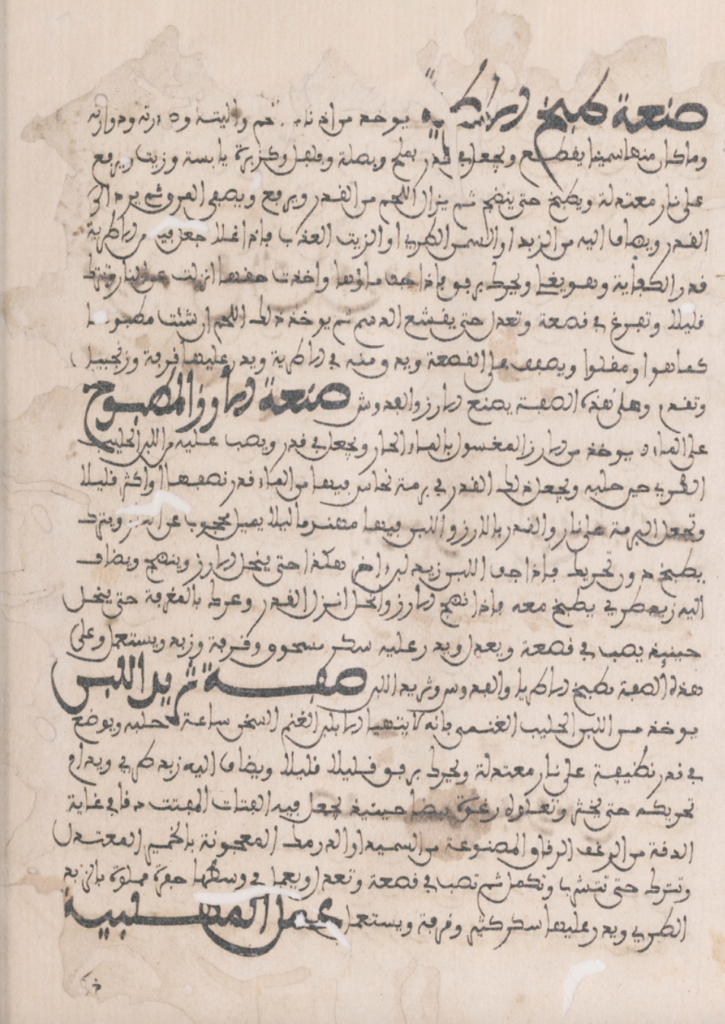As I had some of the muḥammaṣ grains left, I decided to put them to good use to make another Andalusian recipe, this time from an anonymous collection, which hails from the same century (13th c.) as The Exile’s Cookbook.
The recipe is a variant of one for making ‘cooked rice’ (أرزّ مطبوخ, aruzz matbukh) but which could also be used for itriyya (إطرية, ‘noodles’) or fidaw(i)sh (فداوش) — the ancestor of the Spanish fideos (a vermicelli-type pasta), as is done for the re-creation. The author explains that fidawsh could refer to dough in the shape of long wheat grains, round like coriander seeds (in the Bijāya region), or sheets as thin as paper. The second type is very similar in size to the historical muḥammaṣ, and thus allowed me to use up the remainder of my batch.
The recipe is also unusual in that it makes use of a bain-marie. The semolina pellets are put in a pot (a bowl works well too) with milk which is placed inside a container (the recipe mentions a copper cauldron) filled up with water halfway. The mixture is left to cook, without stirring, while the milk is topped up if it dries out. The cooking continues until the pellets are done and dissolved in the milk. Butter is also added at an appropriate point. The dish is served spread out on a platter or shallow bowl, and sprinkled with sugar and cinnamon, as well as another dash of butter.
A similar recipe is still made today, and in Algeria is known as ‘barkūkas(h)‘, but also bears some resemblance to the sweet Tunisian couscous, masfouf (مسفوف).
It may also be the ancestor of the medieval European classic the frumenty (a corruption of the French froment, ‘wheat’), a sweet porridge made with wheat, milk, cinnamon and sugar.



